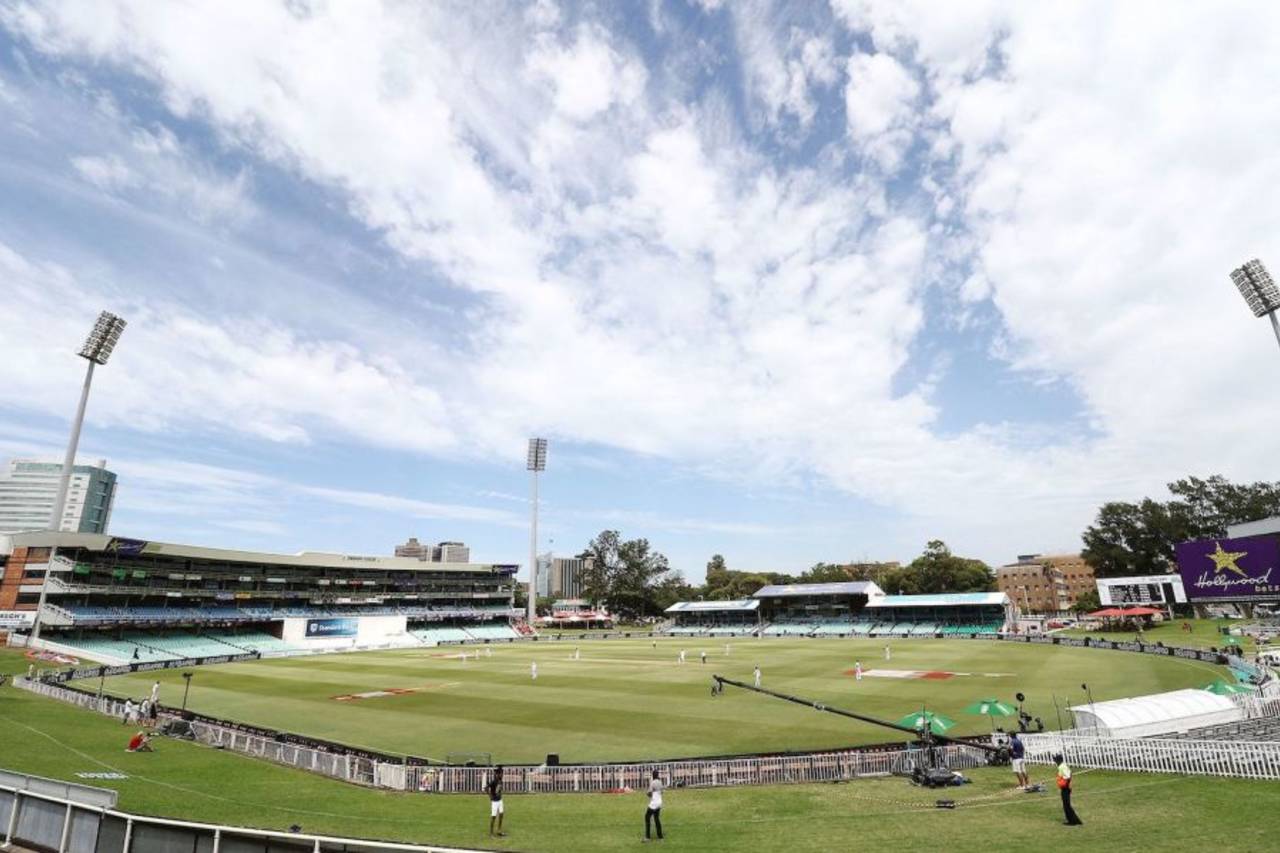Just how formidable are South Africa at home, really?
Not all that much over the last decade and a half, if you go by the numbers
Sidharth Monga
24-Dec-2021

Ground reality: South Africa have lost seven of their last nine matches at Kingsmead, Durban • Getty Images
In between his pleasantries with the BCCI during his pre-departure press conference, India's captain, Virat Kohli, spoke of the actual cricketing challenge in South Africa too. He rightly said South Africa has the most challenging conditions for a visiting batter, but as a team overall, South Africa might just be the friendliest of the big five countries that are generally thought to be the toughest for players from visiting sides to succeed in.
The instant image that comes to mind when you think South Africa is of their fast bowlers running through visitors, but scratch a little and major victories for visiting teams spring up. Even on what seemed like a disastrous tour in 1996-97 - infamous for the 100 all out and 66 all out in Durban, India might have snuck a win in Johannesburg if not for one of those infamous Highveld electric storms. Ten years later, they won a Test with a fractious team, practically using only two fast bowlers.
In the last 15 years, only Sri Lanka, West Indies, Bangladesh, Zimbabwe and Ireland have worse win-loss ratios at home.
India are yet to lose a Test out of the five they have played in Johannesburg, having won two and come close to winning two others. Australia and England, too, find themselves at home at this ground, having won more than they have lost. Kingsmead in Durban, of late, has almost become an away venue for South Africa: they have lost seven of their last nine matches there. Teams that are powerful at home don't have two bogey grounds among their regular marquee venues. Add Port Elizabeth's slow surface, and South Africa have three of the ten regular Test venues that have been the worst for home teams over the last 15 years.
When Kohli says the conditions are the most challenging for visiting batters, he is right. There is England-like seam movement, and Australia-like pace and bounce at three of South Africa's venues. Durban and Port Elizabeth can assist spin and reverse swing. That means visiting bowlers, too, find sporting conditions if they are good enough.
Most crucially, Tests sides falter in away Tests because their attacks don't have the depth for those conditions, but sometimes in low-scoring matches you can manage without depth, as India did in Johannesburg in that 2006 game, when they needed a fourth bowler for only 22 overs in the whole Test.
The differences in averages above tell you that while India and Australia totally obliterate opposition sides at home, England and South Africa are comparable in the extent of opportunity their conditions provide visiting sides. Pitches in both places afford generous amounts of seam movement, or let opposition sides into the game at certain venues. In New Zealand, the difference between away batters' and away bowlers' averages has been 17.7 points over the last seven years, with their swing bowlers using the peculiar conditions, which keep getting better for batting as the match grows older. A three-year rolling comparison shows how South Africa and England are close to each other.
One of the reasons England might have a better record than South Africa at home despite similar numbers for visiting bowlers could be that South Africa hardly play long series. As the length of a series increases, the strengths of home sides tend to pull them ahead of visiting sides over the duration.
You are not out of a series even if you lose the first Test in South Africa, as has been witnessed on two of India's last four tours. In 2006-07, India squandered a 1-0 lead; in 2010-11, they came back from a crushing defeat in the first Test to end up 1-1. Also, the home side is much less likely to win two on the bounce in South Africa.
In an era where most home teams are making the most of home advantage by playing on pitches and in a manner that seek to eliminate the opposition bowlers, South Africa's pitches remain arguably the most sporting. If you have a good attack and at least one good spinner, you are never out of it in South Africa, which is what India will be thinking as they look to turn those odd Test wins into their first series win in the country.
Stats inputs from Shiva Jayaraman
Sidharth Monga is an assistant editor and Shiva Jayaraman a senior stats analyst at ESPNcricinfo